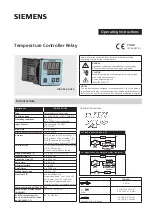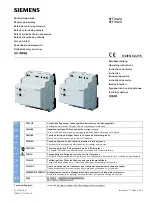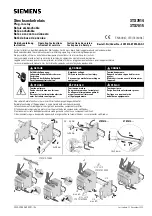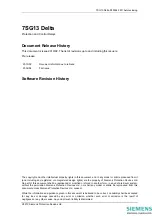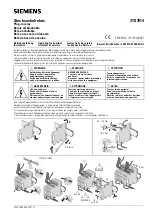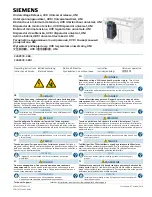
Directional operation can be combined
together with corresponding communication
logic in permissive or blocking teleprotection
scheme. Current reversal and weak-end
infeed functionality are available as well.
Sensitive directional residual
overcurrent and power protection
SDEPSDE
In isolated networks or in networks with
high impedance earthing, the earth fault
current is significantly smaller than the short
circuit currents. In addition to this, the
magnitude of the fault current is almost
independent on the fault location in the
network. The protection can be selected to
use either the residual current or residual
power component 3U
0
·3I
0
·cos
j
, for
operating quantity. There is also available
one non-directional 3I
0
step and one non-
directional 3U
0
overvoltage tripping step.
Thermal overload protection, one
time constant LPTTR
The increasing utilizing of the power system
closer to the thermal limits has generated a
need of a thermal overload protection also
for power lines.
A thermal overload will often not be detected
by other protection functions and the
introduction of the thermal overload
protection can allow the protected circuit to
operate closer to the thermal limits.
The three-phase current measuring protection
has an I
2
t characteristic with settable time
constant and a thermal memory.
An alarm level gives early warning to allow
operators to take action well before the line
is tripped.
Breaker failure protection CCRBRF
Breaker failure protection (CCRBRF) ensures
fast back-up tripping of surrounding breakers
in case the own breaker failure to open.
CCRBRF can be current based, contact based,
or an adaptive combination of these two
principles.
A current check with extremely short reset
time is used as check criterion to achieve a
high security against unnecessary operation.
A contact check criteria can be used where
the fault current through the breaker is small.
Breaker failure protection (CCRBRF) current
criteria can be fulfilled by one or two phase
currents, or one phase current plus residual
current. When those currents exceed the user
defined settings, the function is activated.
These conditions increase the security of the
back-up trip command.
CCRBRF function can be programmed to give
a three-phase re-trip of the own breaker to
avoid unnecessary tripping of surrounding
breakers at an incorrect initiation due to
mistakes during testing.
Stub protection STBPTOC
When a power line is taken out of service for
maintenance and the line disconnector is
opened the voltage transformers will mostly
be outside on the disconnected part. The
primary line distance protection will thus not
be able to operate and must be blocked.
The stub protection STBPTOC covers the
zone between the current transformers and
the open disconnector. The three-phase
instantaneous overcurrent function is
released from a normally open, NO (b)
auxiliary contact on the line disconnector.
Pole discordance protection
CCRPLD
Circuit breakers and disconnectors can end
up with the poles in different positions (close-
open), due to electrical or mechanical
failures. This can cause negative and zero
sequence currents which cause thermal stress
on rotating machines and can cause
unwanted operation of zero sequence or
negative sequence current functions.
Normally the own breaker is tripped to
correct such a situation. If the situation
persists the surrounding breakers should be
tripped to clear the unsymmetrical load
situation.
Bay control REC650
1MRK 511 249-BEN -
Product version: 1.1
Issued: February 2011
ABB
21
Содержание REC650 ANSI
Страница 1: ...Relion 650 series Bay control REC650 Product Guide...
Страница 81: ...81...







































